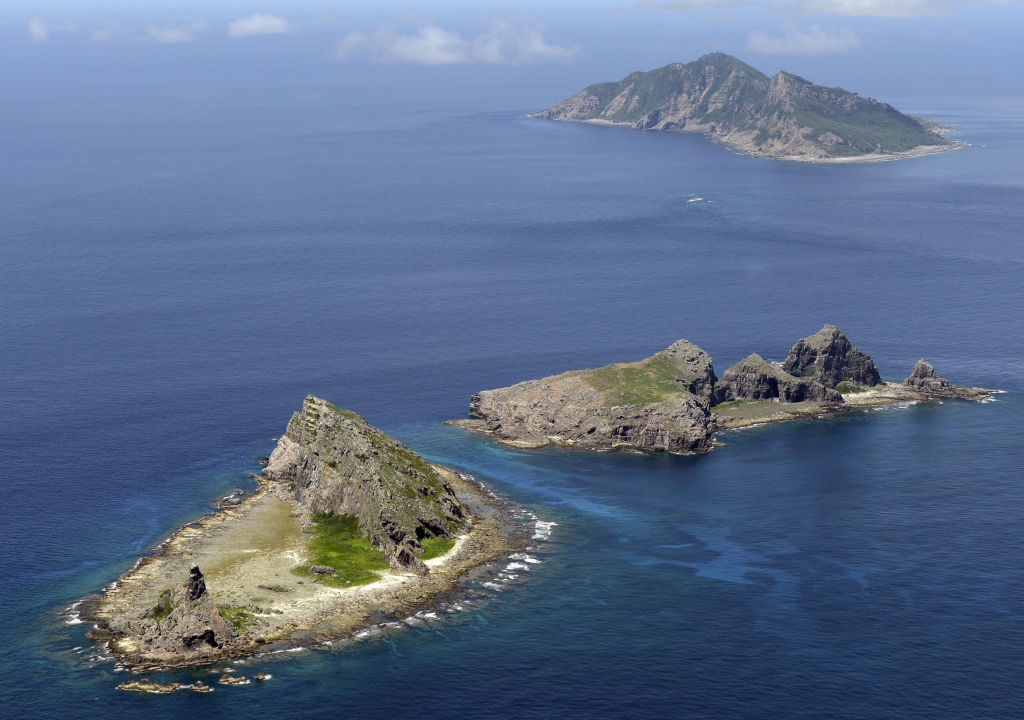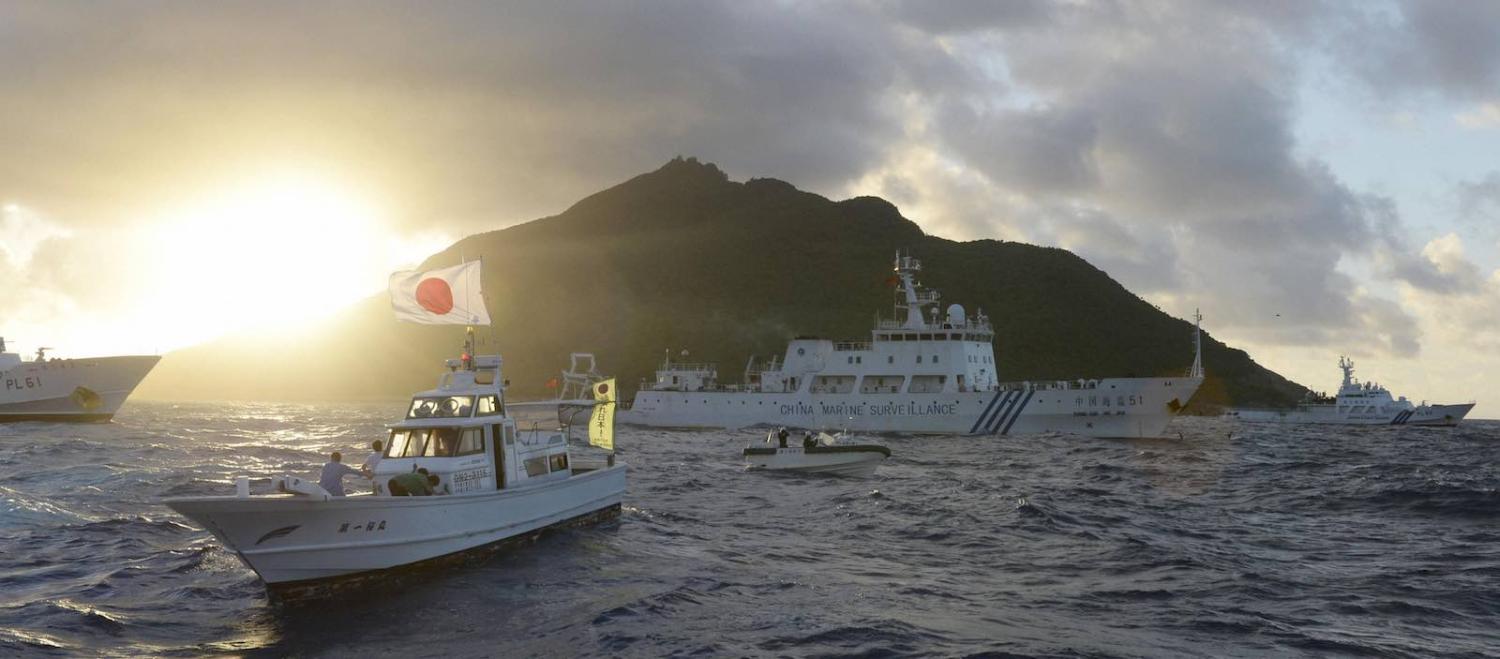Between April and June this year, Chinese Coast Guard ships entered the contiguous zone around the disputed Senkaku/Diaoyu islands in the East China Sea for a record 64 consecutive days. In this flashpoint area between China and Japan, the number of Chinese incursions into the islands’ territorial sea so far this year already exceeds the total number for all of 2018.
While these latest incursions have occurred in the context of improving bilateral ties between China and Japan, and do not constitute or portend a major incident or crisis, it is only a matter of time until tensions spike again. Because crises over the Senkaku/Diaoyu islands may carry outsize consequences for regional stability, the US-Japan alliance, and Sino-American competition, it is important to understand Beijing’s strategy.
Research shows that Beijing has regularly sought to use this offshore conflict to drive a wedge into the US-Japan alliance – particularly during the major incidents over the islands in 2010, 2012, and 2013. Yet Beijing’s approach to wedging in the East China Sea has been unique.

Traditionally, a country aiming to divide an alliance focuses its efforts on the alliance’s junior partner, generally the more susceptible party, as the divider seeks to induce or coerce it in ways that weaken its relationship with its patron. In the Senkaku/Diaoyu conflict, however, China’s principal target has been the United States – the senior partner. Beijing is aware of the dramatic asymmetry in interests between the United States and Japan in the dispute, and that Washington, lacking inherent interests in the islands, is eager to avoid a potentially cataclysmic conflict with China over them. In other words, in the Senkaku/Diaoyu conflict, Washington has been targeted as the more susceptible party.
China has sowed discord within the US-Japan alliance and exacerbated abiding Japanese fears of US abandonment.
By appealing to US interests in conflict management, crisis stability, and healthy Sino-American relations, Beijing has sought to induce and coerce the United States – and have Washington, in turn, compel Tokyo – to adopt policies inimical to the latter’s territorial interests. In so doing, China has sowed discord within the US-Japan alliance and exacerbated abiding Japanese fears of US abandonment.
In this respect, far from seeking to ensure the United States does not interfere in the conflict – as Beijing’s purportedly sacrosanct policy holds – a central aspect of China’s strategy has been to involve Washington directly and robustly.
In 2012–13, after raising the risk of conflict in the East China Sea by sending unprecedented numbers of ships and aircraft into the waters and airspace around the Senkaku/Diaoyu islands, Beijing called on Washington to restrain Japan and to compel Tokyo to make concessions. China’s Ministry of Foreign Affairs stated: “We urge the US side to be responsible on the Diaoyu Islands issue … and take concrete actions to safeguard regional peace and stability [emphasis added].”
But Beijing went further, requesting US mediation. In a high-profile speech organised by the Ministry of Foreign Affairs, a senior retired Chinese official remarked: “If the US really intends to play a neutral and constructive role, it should urge the parties to the dispute to the negotiating table and resolve the difference by peaceful means.” Adding urgency to these exhortations (and hinting at the risk of entrapment), the Chinese ambassador to the United States counselled Washington not to “lift the rock off Japan only to let it drop on its own feet.”
Washington proved receptive to Beijing’s appeals. The White House urged Tokyo to offer “concessions” to Beijing while then–US National Security Advisor Tom Donilon suggested that “the parties should seek to have conversations about this through diplomatic channels,” a proposition antithetical to Tokyo’s policy of not acknowledging the dispute.
It was around this time that China began to vigorously promote its concept of a “new type of great-power relations,” a broad framework for the future of US-China relations to which the Obama administration, keen to establish healthy long-term ties, was initially receptive. “Respect for core interests” was said to be the “crux” of this new framework, and in April 2013, Beijing declared for the first time that the Senkaku/Diaoyu islands were among its “core interests.”
Beijing thus sought to link improved US-China ties to Washington’s willingness to attenuate its support for Japan’s territorial interests.
The subsequent declaration of the Air Defence Identification Zone (ADIZ) by China in late 2013 over a large swath of the East China Sea, including the Senkaku/Diaoyu islands, was designed to set US and Japanese interests in opposition to each other. It a move only seldom noticed at the time, Beijing publicly offered to implement a long-stalled crisis-management mechanism promptly after establishing the ADIZ. Appealing to American interests in de-escalation, China’s offer was contingent on Japan de-conflicting its ADIZ with China’s, a condition Tokyo was unwilling to meet for fear of legitimising China’s territorial claims. Washington, however, was quick to endorse Beijing’s call, with vice president Joe Biden stating that the ADIZ “underscores the need for crisis-management mechanisms.”
This and other episodes have led to what can be described as a “growing constituency [in Japan] that doubts the US commitment to the security guarantee”.
Although US-China relations are today far from where they were during the Obama administration, Beijing can be expected to employ a broadly similar strategy against the Trump administration and others in the future. This is because no matter how antagonistic US-China relations become, there is likely to be continuity – and sustained asymmetry – in US and Japanese interests in the Senkaku/Diaoyu dispute.
It strains the imagination, for example, to see a future Japanese administration accommodating China in the East China Sea as, say, the Philippine’s Rodrigo Duterte has done in the South China Sea. And even if Washington becomes more willing to incur risk vis-à-vis Beijing in maritime East Asia, it will remain highly motivated to avoid being dragged into a conflict with China over eight uninhabited islets and rocks in the East China Sea.
This asymmetry in US and Japanese interests is likely to continue to be exploitable and will constitute a persistent weakness in what is otherwise a strong and resilient alliance.
None of the views expressed above reflect the policy or position of CNA or any of its sponsors.

